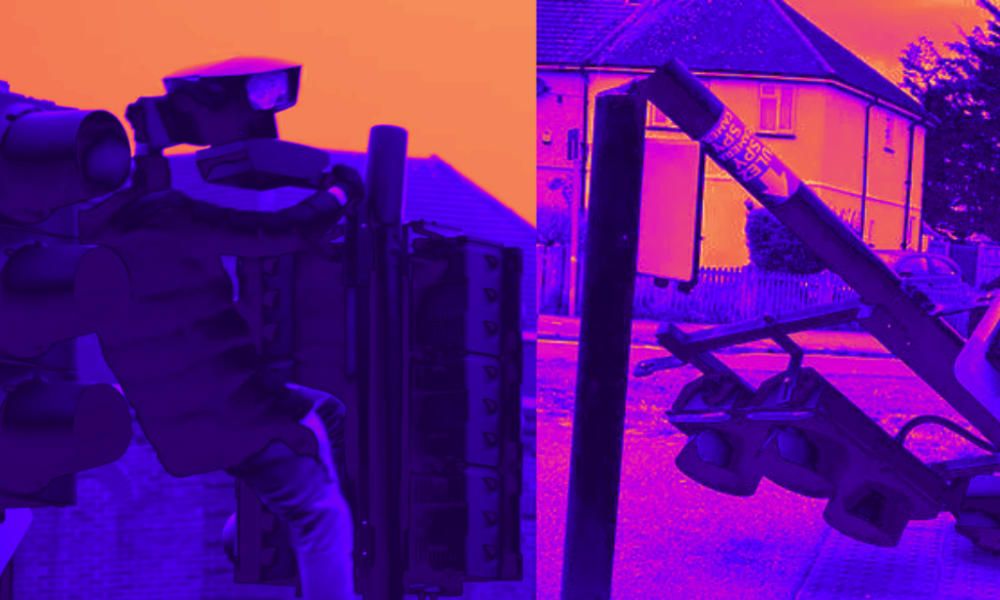Intelligent Transport Systems (ITS) and mobility applications are designed with a singular, overarching goal: to enhance safety, efficiency and sustainability on our road networks. From smart motorways with their variable speed limits and incident detection, to real-time traffic apps and automated enforcement cameras, these technologies are developed to prevent incidents, reduce congestion and improve journeys for everyone. Yet, despite their clear public benefits, a significant minority of people view these systems with suspicion, hostility and in some cases, outright vandalism. Alistair Gollop delves into the complex reasons behind this profound mistrust and the destructive behaviour that often accompanies it, examining the underlying fears, misconceptions and societal factors at play.

The Roots of Suspicion: A Cocktail of Fears and Misconceptions
The mistrust towards ITS technologies is rarely consistent. Instead, it tends to stem from a range of factors, often amplified by a lack of understanding and fuelled by misinformation.
1. Privacy Concerns and Surveillance Fears : At the heart of much public suspicion lies the fear of surveillance. Many ITS technologies, particularly those involving cameras (e.g., ANPR for traffic monitoring, average speed cameras) and data collection (e.g., journey time monitoring through Bluetooth or Wi-Fi detection), can be perceived as intrusive. In an era of heightened awareness around data privacy, the idea of the "state" or large corporations constantly tracking movements can trigger deep-seated anxieties about civil liberties. While the data collected is typically anonymised or used for specific, legitimate purposes like traffic management, the public often lacks a clear understanding of these safeguards. The perception of being constantly watched, rather than safely guided, can breed resentment.
2. A Perceived Loss of Autonomy and Control: For many drivers, the act of driving represents a degree of freedom and independence. ITS, with its automated controls, mandatory speed limits (e.g., smart motorways) and prescriptive routing advice, can be seen as eroding this autonomy. The feeling of being "told what to do" by a machine, rather than exercising personal judgement, can lead to a sense of disempowerment. This is particularly true for technologies that directly intervene or enforce behaviour, such as speed cameras, which are often viewed as revenue generators rather than safety devices, irrespective of statistical evidence to the contrary.
3. Lack of Transparency and Education: A significant portion of the public remains unaware of the intricate workings or even the exact purpose of many ITS technologies. When new systems are introduced, the explanations provided by authorities can sometimes be insufficient, overly technical, or fail to address common public concerns directly. This knowledge gap creates fertile ground for speculation and misunderstanding. Without a clear narrative explaining why a particular technology is needed and how it benefits the individual and the wider community, suspicion can easily take root. The "black box" phenomenon - where technology operates without clear explanation - can breed distrust.
4. Conspiracy Theories and Misinformation: In the age of social media, misinformation can spread rapidly and widely, often unchallenged. Fringe conspiracy theories linking ITS technologies to broader governmental control agendas, "15-minute cities," or even health risks can gain traction amongst vulnerable segments of the population. These narratives, no matter how unfounded, contribute to a pervasive sense of mistrust and can solidify negative perceptions of ITS.
5. Historical Context and Negative Associations: Some ITS technologies have become synonymous with negative experiences or perceptions. For example, the term "smart motorways" in the UK has become highly contentious because of concerns about their safety without hard shoulders. This negative association, even if specific to one type of technology, can cast a long shadow over the public's view of all ITS initiatives, fostering a general distrust of any new "smart" infrastructure.

The Leap to Vandalism: From Suspicion to Destruction
While mistrust might manifest as grumbling or online criticism, for a minority, it escalates to active vandalism and equipment damage. This destructive behaviour is a significant challenge, incurring substantial costs for repair and replacement, delaying the benefits of the technology and potentially compromising public safety. The reasons for this escalation are multi-layered:
1. Expression of Frustration and Powerlessness: Vandalism can be an extreme manifestation of frustration. When individuals feel unheard, ignored or powerless in the face of perceived technological overreach, breaking equipment can become a destructive outlet for their anger. It's a tangible act of defiance against a system they feel is imposing upon them.
2. Retaliation Against Perceived Injustice: If ITS systems, particularly enforcement technologies, are viewed as unfair, discriminatory or solely profit-driven, individuals might see vandalism as a form of retaliation. The act of damaging a speed camera, for instance, might be perceived by the perpetrator as "fighting back" against what they consider an unjust fine or an oppressive system.
3. Influence of Online Echo Chambers and Group Mentality: Online forums and social media groups can create echo chambers where negative perceptions of ITS technologies are reinforced and amplified. In these environments, acts of vandalism might even be celebrated or encouraged, fostering a group mentality that legitimises destructive behaviour as a form of "resistance". The anonymity of online platforms can embolden individuals who might otherwise hesitate.
4. A Misguided Sense of Public Service: In some extreme cases, individuals who vandalise equipment might genuinely believe they are performing a public service. They might view themselves as "activists" or "freedom fighters" protecting others from what they perceive as harmful or intrusive technologies, despite the actual safety benefits these systems provide. This warped sense of righteousness may justify their destructive acts.
5. Simple Criminality and Opportunism: It is also important to acknowledge that some acts of vandalism are simply opportunistic criminal behaviour, not necessarily driven by specific anti-ITS sentiment, but by a general disregard for public property or a desire to cause mischief. However, even in these cases, the underlying public negativity towards ITS can make these acts less condemned by segments of society, implicitly providing a degree of justification.

Bridging the Divide: Rebuilding Trust and Fostering Acceptance
Addressing the profound mistrust and preventing vandalism requires a multifaceted approach focused on education, transparency and genuine public engagement:
Proactive and Clear Communication: Authorities must move beyond simply announcing new technologies to actively explaining their purpose, benefits and safeguards in plain, accessible language. Visual aids, case studies and clear FAQs can help demystify complex systems.
Emphasise Safety and Efficiency: Reiterate and demonstrate how ITS technologies directly contribute to preventing accidents, saving lives and reducing journey times. Quantifiable data and real-world examples are crucial.
Address Privacy Concerns Head-On: Be transparent about data collection practices, anonymisation techniques and how data is protected. Emphasise that personal tracking is not the objective.
Community Engagement and Dialogue: Establish channels for public feedback and genuine dialogue. Listen to concerns, address misconceptions directly and involve communities in the planning stages of new ITS deployments.
Visible Benefits: Ensure the benefits of ITS are tangible and visible to the public. When people experience smoother commutes, fewer accidents, or better information, trust naturally increases.
Consistent Enforcement and Messaging: For technologies like speed cameras, maintain consistent enforcement principles and messaging that clearly link their presence to accident reduction, not just revenue.
Combat Misinformation: Develop strategies to proactively counter misinformation and conspiracy theories circulating online, providing credible and accessible counter-narratives.
The mistrust and vandalism directed at ITS technologies are not merely random acts. They are symptoms of deeper societal anxieties about privacy, control and the pace of technological change. For ITS to truly achieve its transformative potential, the industry and public authorities must do more than just innovate; they must also prioritise building public understanding, fostering trust and demonstrating unequivocally that these intelligent systems are indeed for the safety and benefit of us all. Only then can we move beyond suspicion and towards a future where technology truly empowers our journeys.
150x150.png)